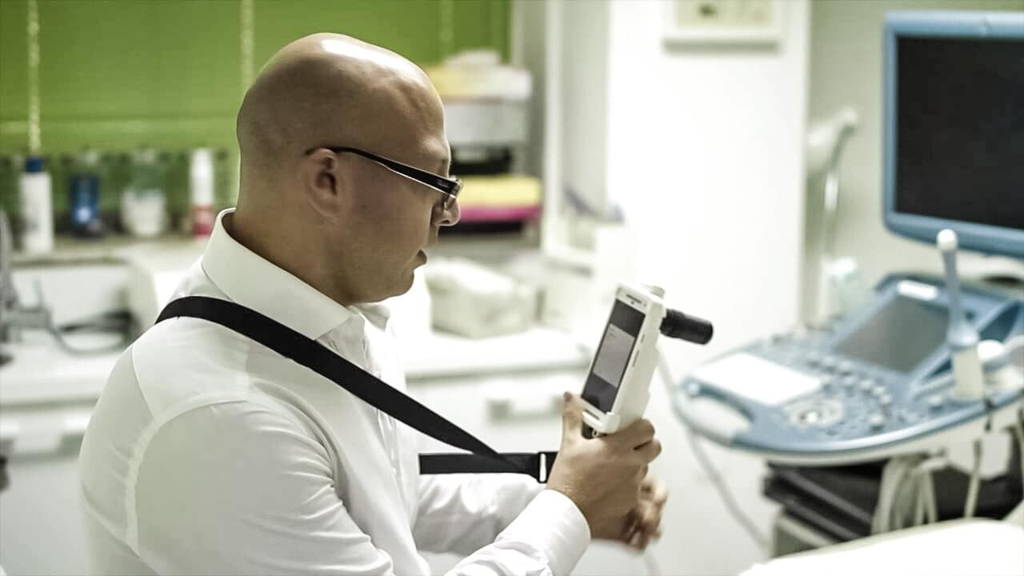EVA
EVA is an affordable tool against cervical cancer. The Enhanced Visual Assessment system, developed by Israeli company MobileODT, enables doctors to perform exams and offers patients from areas that lack sufficient medical infrastructure a chance to get second opinion via the internet. It consists of a powerful light source, magnifying lens, an app and its own long lasting, rechargeable battery.The ingenuity of EVA is that it can be attached to a smartphone and use that camera to create images that can be later used for diagnostics and treatment of cervical cancer and other abnormalities in the female reproductive system. All data is managed by the app and can be stored on the cloud, making it available for remote expert consultations, clinical revisions and more.
Breast-cancer
A team led by Noam Shomron from Tel Aviv University, and MIT’s Natalie Artzi, uncovered how a combination of genetic therapy and chemotherapy, delivered to the prime tumor site, successfully stopped the metastasis in mice test subjects. This research project was published in September.“We realized we had stopped breast cancer metastasis in a mouse model, and that these results might be applicable to humans,” Shomron said. “There is a strong correlation between the effect on the genes in mouse cells and the effect on the genes in human cells. Our results are especially encouraging because they have been repeated several times at TAU and at MIT by independent groups.”
3D-printed human tissue
A special 3-D printer manufactured by an Israeli company, NanoDimension makes it possible soon to print a new liver or heart and saving a life. The printer uses special, stem cell-enriched bio-ink (the result of collaboration with another Israeli company, Accellta) to create 3-D structures that form the human tissue. After the tissue is printed, it’s sent to Accellta for incubation.Other companies are developing the same, but not with this inkjet technology, which has superior speed and accuracy. Usually, printing a small sample of tissue would take an entire night in controlled lab conditions and would be used mainly for research. Nano Dimensions’ 3-D printer can do the same in mere seconds, making the process apt for commercial use, such as testing pharmaceuticals on living tissue, or printing tissues during emergency procedures in hospitals. The technology itself is still in early stages of development, but its potential impact on medicine, health and science is huge.
Walk again
ReWalk Robotics Ltd.’s Personal Exoskeleton enables individuals with spinal cord injuries to stand upright, walk and turn as well as ascend and descend stairs. Computer processors and motion sensors embedded into the system work in unison to replicate a natural human gait. As the person moves, the system detects changes in his or her center of gravity and applies corrective measures to maintain stability and fluidity of movement.Bones out of a lab
In the beginning of December, Bonus BioGroup Ltd. Explained that it had successfully completed bone-graft injections for 11 patients. Bones were grown out of patients’ own fat cells and then injected into their jaw, filling the void in bone-deficient areas. The transplant was successful in all of the reported cases.CEO Shai Meretski: “For the first time worldwide, reconstruction of deficient or damaged bone tissue is achievable by growing viable human bone graft in a laboratory, and transplanting it back to the patient in a minimally invasive surgery via injection.” The technology is still in its trial stage and is not yet commercially available. The company has said it wants to list its shares in the U.S.






